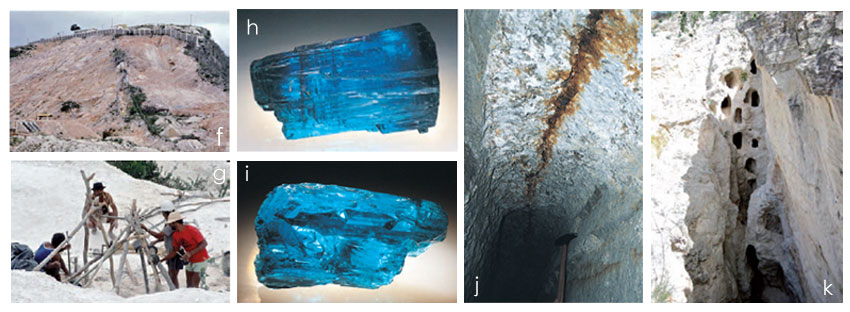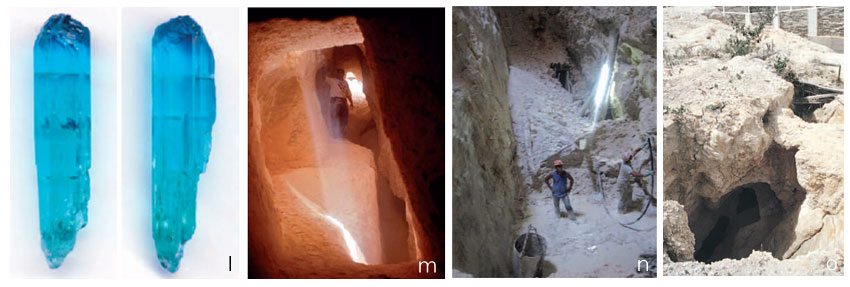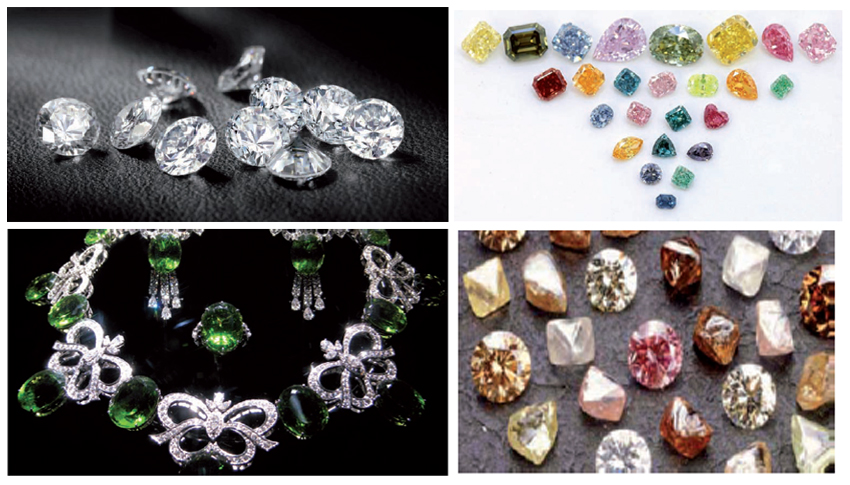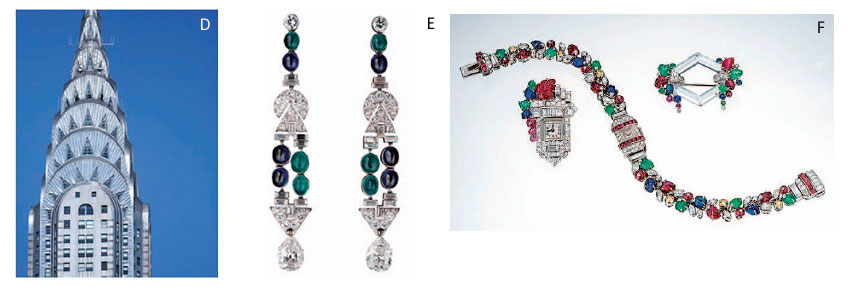|
|
The
Pariba Promise
By Pariba Promise |
|
| |
“Heitor the
Fool!” was the general comment that locals used to describe
Heitor Dimas Barbosa, the man obsessed with digging for gems
that he believed would be completely different from anything
anyone had ever seen before. Urged on by an inner guidance,
Barbosa dug and tunneled for seven years in a hill behind the
village of Sao Jose de Batalha, Paraíba, Brazil, a region
that is famously arid, rugged and poor, with one of the lowest
per capita incomes in the nation. It is a land with nearly no
water and scorching dry seasons.
In 1981, when Barbosa first started his quest, electricity was
more than a decade away. In 1987, the first gem was found at
the Batalha Mine in Paraiba. Barbosa had unearthed one of the
rarest gems of the world: a tourmaline uniquely coloured by
copper — cuprian — that creates a mesmerizing vivid
blue and bluegreen hue with an electric glow. |
|
| |
 |
|
| |
A) Cuprian elbaite from the Batalha mine, 5-cm
crystal with 1.3-cm (4-carat) cut stone. Michael Scott collection;
Van Pelt photo courtesy of Michael Scott.
B) Cuprian elbaite crystal from the Batalha mine showing blue
and turquoise-blue zones, 3 cm, with 2-carat (9-mm) cut stone.
Michael Scott collection; Van Pelt photo courtesy of Michael
Scott.
C) Intense colour saturation from their copper content is the
trademark of the stones from the original Batalha Mine.
D) The Batalha mine workings on Frade Hill. Brendan Laurs photo.
E) The village of Sao Jose da Batalha; the Batalha mine is visible
in the distance. Brendan Laurs photo.
|
|
| |
These startling
gems emerged onto the world stage in 1990 in Tucson, Arizona,
at various venues during the February gem shows. Due to their
unreal neon appearance, the gems were initially met with skepticism.
Nonetheless, these tourmalines from the Paraiba mine that were
selling for $250 a carat at the start of the shows skyrocketed
and six days later, at the end of the shows, were selling for
as much as $2,500 a carat.
Skepticism had been replaced by awe.
“Ultramarine,”
“neon” and “electric” were words passionately
exchanged to describe these exceptional tourmalines. A basic
question that came up time and again was “Where is this
stone from?” The answer, “Paraiba,” became
so associated with the stone it became known as “Paraiba
tourmaline.” The buzz was phenomenal.
And
while production of original Paraiba tourmaline has dwindled,
today, work continues in a new section of the Batalha Mine.
Some 90 percent of the tourmaline production at the site occurred
between 1989 and 1992. Starting around 1998, small tourmaline
stones and the occasional 0.50-carat to 2-carat tourmaline were
found sporadically as miners worked the soil and alluvium material
surrounding the mine. The very mention of this stone brings
hope for a new discovery of similarly saturated tourmaline at
other mining sites or even, possibly, in the new section of
the original mine now being explored. |
|
| |
 |
|
| |
f) By the late 1990s, scraped to the bedrock,
the original Batalha Mine hill was producing only tiny fragments
and occasional stones in the soil and nearby alluvium, while
an eager
market waited impatiently for any gems or news of new discoveries
from this source.
g) From 1982 through 1995, almost 10,000 feet of shafts, drifts
and tunneling were accomplished by hand with candlelight and
rudimentary tools. This photo from 1990 shows miners working
a hand winch to haul material from approximately 130 feet below
ground, where, at that time, the strongest concentrations of
the “neon” stones were found. The mountains of white
clay — kaolinite, host to the elusive tourmaline —
attest to the volume of extraction being done.
h) Cuprian elbaite, 3.3 cm, from the Batalha mine (ca. 1989).
Brian Cook specimen; Wendell Wilson photo
i) Cuprian elbaite, 2.2 cm, from the Batalha mine (ca. 1989).
Brian Cook specimen; Wendell Wilson photo.
j) Cross-section of one of the pegmatite veins visible in the
roof of a drift at the Batalha mine. Brendan Laurs photo.
k) Cross section of the Batalha Mine’s original Heitorita
vein, which produced the most intensely coloured stones. Additionally,
many combinations of hues were found at different
levels of this vein, including polychromezoned tourmalines in
various colour combinations. |
|
| |
The Batalha Mine’s
tourmaline commands the highest per-carat prices simply because
it is superior in colour saturation to any other source of “Paraiba-type”
cuprian tourmaline in the world. Prices today for top-quality
stones larger than 10 carats can reach beyond $100,000 per carat.
A ceiling price has never been established because prices for
these tourmalines continue to climb.
Brian
Cook, a geologist and co-owner of Nature’s Geometry, a
gemstone trading and design company in Tucson, Arizona, and
Bahia, Brazil, wrote this story based on his face-to-face conversations
with Barbosa and his numerous visits to the Batalha Mine since
the 1980s. |
|
| |
 |
|
| |
l) Cuprian elbaite, 1.7 cm, from the Batalha mine
(ca. 1989). Wendell Wilson collection and photo.
m) Drifts and shafts in one of the four original veins, where
the near-vertical vein drops down almost 150 feet from the surface.
Access to the mine was by rappelling handover-
hand up or down a rope held in place by sticks lashed together.
This was the only way in or out of the mine until 1995, when
an access tunnel was created.
n) This view is of the southern extension of the Heitorita vein,
which is being explored today at a deeper level. The water table
impedes progress as it causes the 6-feet- to 15-feetwide kaolinite
vein to collapse. However, there have been some new finds of
the original-colour tourmalines in small sizes in the 2-millimetre-or-less
range. Investment in
modern mining equipment will be necessary to go deeper into
the mine.
o) Old workings at the Batalha mine from which much cuprian
elbaite was taken. Brendan Laurs photo. |
|
| |
|
|
| |
|
|
| |
Will
Holidays Save Diamonds?
By Avi Krawitz
|
|
| |
The diamond trade,
much like the global economy, has been buoyed by mature markets
in 2013 while emerging economies have been jitter. That trend
continued in September as the industry started to gear up for
the fourth-quarter holiday season. With Diwali, Christmas and
the Chinese new year on the horizon, expectations rose for a
spurt of activity driven by a study U.S. market and a hoped-for
rise in Chinese demand.
The
focus of the trade turned to the Fair East in September in the
hope that the Hong Kong Jewellery & Gem Fair would confirm
a reawakeninf of Chineses Demand ahead of the October Golden
Week - considered the second-busiest retail festivalin China
after the Chinese New Year. Trading at the show was mediocre
with selective demand and a strong emphasis on lower price points.
But it was indeed the Chinese buyers who dominated activity
, even as overall trading was at lower levels than in previous
years. |
|
| |
 |
|
| |
Conservative buying
at the show was not enough to drive the rise in polished prices
that supplies had hoped for. The RapNet Diamond Index (RAPI)
for 1-carat certified polished diamonds fell 0.4 percent during
the period September 1 to September 17. RAPI for 0.30-carat
diamonds increased 0.6 percent, while 0.50-carat diamonds dropped
0.2 percent. RAPI for 3-carat diamonds was up 0.1 percent during
the period.
Throughout the
month, there remained strong demand for 0.30-carat to 0.60-carat,
G-H, VS-SI, triple EX Goods, while demand for J-M, VVS goods
in the same sizes was steady. Similarly, there has been stable
demand for 1-carat, J-M, VS-SI Goods. Fancy shapes and fancy
colour diamonds are selling well as buyers seek creative ways
to work withn their budget constraints.
Chinese
Caution
There was
a sense that chinese buyers needed to buy in September to prepared
for the holiday season because retail jewellers were holding
relatively low inventory, reflecting their own caution about
the local market.
Analysis
note that china is at a crossroads in its transition toward
becoming a consumer -driven economy. The government has tried
to implement some structural reforms, such as liberalizing interest
rates, working toward making the yuan a fully tradable currency
and taking steps to reduce its dependency on exports. Encouragingly,
while the economy is expected to slow toward annual growth of
7.5 percent in 2013, China’s exports grew in August, signaling
that the economy is slowly recovering from its previous slump.
Despite the slowdown, there remained a steady flow of diamonds
throughout the region. Hong Kong’s polished imports rose
5 percent year on year to $8.88 billion in the first half of
2013, while polished exports from Hong Kong fell 4 percent to
$5.8 billion. Net polished imports — which is the excess
of imports over exports, indicating the amount of goods that
remained in Hong Kong — rose 28 percent to $3.08 billion.
|
|
| |
|
|
| |
 |
|
| |
Mixed Markets
Financial
markets in the region have also reflected caution about the
economy, with Hong Kong’s Hang Seng Index having a down-and-up
year to remain about flat since January. A similar pattern has
been witnessed in other emerging markets, with India’s
Sensex Index also flat for the year so far. In contrast, stock
markets in the mature economies of the U.S. and Japan rallied
in 2013, with the Dow Jones Industrial Average and S&P 500
indices up about 15 percent each, while the Nikkei 225 has soared
34 percent this year.
It
is little wonder, then, that confidence in the diamond trade
in these centres has improved this year, particularly in the
U.S., where jewellers have grown increasingly upbeat about the
year-end season. Diamond dealers in the trading centres are
pinning their hopes on that trend continuing for the rest of
the year. They note that slower trading in September was influenced
by sporadic activity in Israel, New York and Belgium, where
many businesses closed during the various Jewish holidays that
took place during the month. In India, the volatile rupee, which
recovered somewhat from its previous lows of
approximately 70 to the dollar, continues to weigh on demand.
Currencies Impact Rough
The
sharp fall in various currencies has impacted trading in a number
of centres. While the Japanese yen has depreciated by about
25 percent against the U.S. dollar in the past year, polished
diamond imports to Japan have increased by 12 percent year on
year when measured in yen, but declined 7 percent in dollar
terms in the first seven months of 2013. Perhaps most significantly,
foreign exchange fluctuations have affected trading in the rough
market as manufacturers, dealers and miners have had to hedge
currency movements. |
|
| |
 |
|
| |
Alrosa reported
that its net profit fell 10 percent to $453 million in the first
half of 2013, partly due to foreign exchange losses. The Russian
ruble has dropped 7 percent in value against the U.S. dollar
since the beginning of the year. Alrosa’s sales increased
7 percent to $2.55 billion in the six months even as the average
price of its gem-quality rough diamonds fell 11 percent from
the previous year. The company noted that prices rose 3 percent
in the first half of the year. However, it is the slump in the
rupee that has most impacted sentiment in the rough market,
particularly as the rupee hit an alltime low in the middle of
the most recent De Beers sight in late August. The weak rupee,
coupled with high rough prices and lower bank credit to buy
rough, has resulted in tight liquidity among Indian manufacturers.
The depressed sentiment has spread to dealers and manufacturers
in the diamond sector in other countries.
As a result, many sightholders
refused De Beers goods, with an estimated 20 percent to 25 percent
of goods left on the table, after average rough prices maintained
relatively high levels at the sight. De Beers reduced prices
slightly on most boxes at the sight and increased prices on
more popular boxes. The
sight had an estimated value of $600 million before refusals.
As a result, there was very little trading of De Beers goods
on the secondary market in September due to a shortage of available
rough and due to the lack of profitability in the boxes. Dealers
were forced to give long-term credit in order to achieve their
desired prices.
Manufacturers voiced their discontent
with the situation and are hoping De Beers will make more significant
price reductions in October. They’re equally hoping that
the expected seasonal spike in demand will help raise polished
prices and improve their profit margins. With Diwali, Christmas
and the Chinese New Year coming up, they may have better times
to look forward to, after the cautious sentiment in the market
throughout 2013 lingered in September. |
|
| |
|
|
| |
|
|
| |
The
Timeless Allure of Art Deco |
|
| |
The
Roaring Twenties — It’s a time that still fascinates
us.
Autos, the radio, the telephone,
and the motion picture became cultural fixtures. Skyscrapers
sprung up in major cities. Jazz rang from speakeasies in
Harlem. F. Scott Fitzgerald, Ernest Hemingway, Coco Chanel,
Duke Ellington, Babe Ruth, and Charlie Chaplin commanded the
cultural stage, their
fame fueled by the rise of the mass media.
The role of women was also changing.
Entering the workforce en masse during World War I, women
gained the right to vote in 1920. Flappers
— women who wore short dresses and short hair —
were the new standard bearers of fashion, shocking society
with their scandalous behaviour. And they
wanted a new style, something that was not like the frilly,
traditional jewellery of the Edwardian and Art Nouveau eras.
Such was the setting for the
arrival of Art Deco — a style that celebrated the machine
age. Sleek ocean liners, streamlined trains, and towering
skyscrapers were favourite images to express this: they symbolized
prosperity, and progress, and the belief that technology was
the cure for all ills.
The term “Art Deco”
— the period lasted from the 1920s through the 1930s
— came from Exposition Internationale des Arts Decoratifs
et Industrials
Modernes, an exhibition of decorative arts held in Paris in
1925. Jewellery was one of the featured items, and the judges
selected geometric, linear pieces that celebrated modern industry.
To give objects a futuristic
look, Art Deco artists used vertical lines and geometric shapes
(arcs, circles, triangles, squares, rectangles, etc.) in
repetitive patterns. The Chrysler Building in Manhattan is
a classic example of Art Deco architecture, and features a
number of these design elements.
Jewellery designers were very
much a part of the Art Deco movement. Departing from the organic
curvilinear flourishes that belonged to the earlier
movement, Art Nouveau, these designers embraced the vertical
line and simple, repetitive geometric patterns. The purpose
was to evoke elegance and
sophistication.
Art Deco jewellers used platinum
and white gold, geometric shapes, and vivid colour, contrasts
to capture the spirit of the time. Diamond cuts in
geometric shapes such as the baguette, triangle, trapeze,
and half-moon became popular in Art Deco jewellery.
Advances in stone cutting allowed
jewellers to make complex pieces, like this platinum, sapphire,
and diamond pendant/brooch shown in the accompanying picture.
A significant event in the Art
Deco movement was discovery of King Tut’s tomb in 1922.
Egypt’s art and architecture were exotic — fresh
inspiration
to artists schooled in old-world masters like Michelangelo
and Rembrandt — and Art Deco practitioners readily borrowed
motifs from it and other ancient civilizations that were being
unearthed. |
|
| |
 |
|
| |
A) This Art Deco poster of a train conveys the
power of technology and progress
B) Brooch courtesy of Frank Goodman & Son, Los Angeles,
CA.
C) Buckle courtesy of Ginger Moro. |
|
| |
Art Deco artists were
simultaneously taking from the past and looking to the future.
This was a unique combination, and created a distinctive style
that gripped the imagination of the public.
The
timeless beauty of Art Deco and its promise of a bright future
is what captivated the flappers — and it still speaks
to us. F. Scott Fitzgerald poetically expressed this sentiment
in The Great Gatsby: “Gatsby believed in the green light,
the orgastic future that year by year recedes before us. It
eluded us then, but that’s no matter — tomorrow
we will run faster, stretch out our arms farther. . . So we
beat on, boats against the
current, borne back ceaselessly into the past.”
Tips for Art Deco jewellery ?
-
Art Deco was defined by the vertical line and repetitive geometric
shapes. Use them to design Deco-inspired pieces. Let your customers
know how these design elements create a sleek and sophisticated
look. ?
- Art Deco jewellery
often has dramatic colour contrasts. Perhaps this was an expression
of optimism towards the future, or a welcome change
from the pastels of the Art Nouveau era and the typical absence
of coloured stones in most Edwardian-Era jewellery. Use of bold,
contrasting coloured gemstones or enamel in your pieces can
evoke the Art Deco style.
-
Art Deco artists freely borrowed design elements from ancient
cultures. The contrast of the modern and the old made for fascinating
works. Customers are likely to find this interesting. You can
also incorporate ancient motifs to add pizzazz to your designs. |
|
| |
 |
|
| |
D) The Chrysler Building is an Art Deco masterpiece.
E ) Art Deco chandelier earrings made with platinum, emeralds,
sapphires, and diamonds.
F ) Tutti Frutti (bold colour contrasts using carved gemstones)
dazzles in this bracelet, brooch, and lapel watch by Mauboussin.
Jewellery courtesy of Kathryn Bonanno. |
|
| |
|
|
|
|